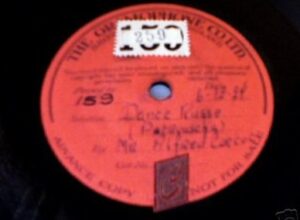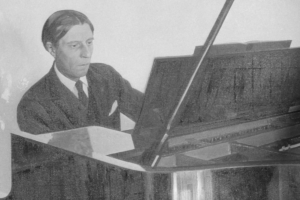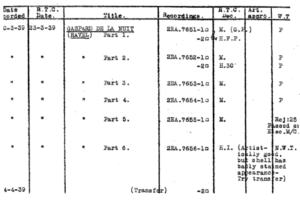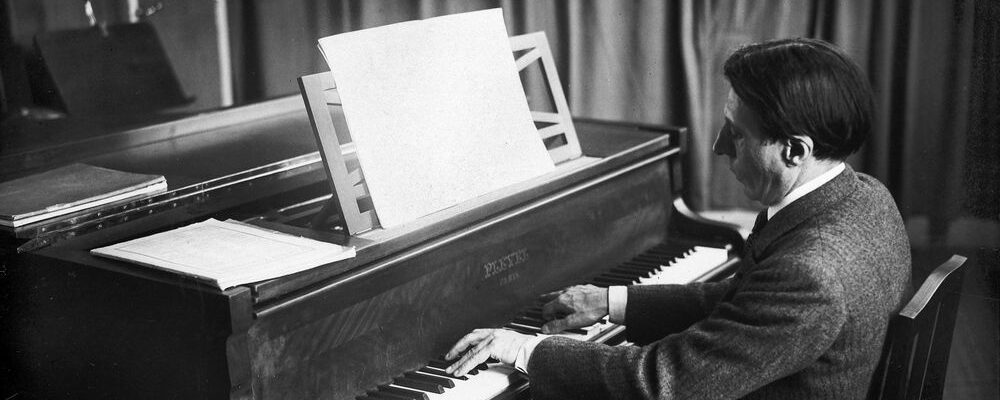There was quite a bit of excitement when a Youtube upload was made of a 1927 test pressing of Alfred Cortot playing the Danse Russe from Stravinsky’s Petrouchka Suite. Those who didn’t read the details on the upload missed the fact that this had been put out by Marston three years ago. I have a bit of background into the story, so thought it’s as good a time as any to share it.

In October 2007 Gregor Benko (co-founder of the International Piano Archives) told me that this Cortot test pressing showed up on eBay. The photo of the label showed it to be an HMV test pressing and certainly looked authentic. Marston of course wanted to secure it for a release, and resources were somehow pooled to ensure that their bid would be the winning one – and fortunately it was. I was asked to keep information about this quiet, which I did.
In May 2008 I went to New York, at which time Gregor and I paid a visit to Ward. This took place the day after Gregor and I had visited someone in Brooklyn who had obtained what appeared to be private recordings of Dinu Lipatti when this collector had cleared out an estate sale in Geneva. Gregor and I saw that the records were clearly authentic, with Lipatti’s distinctive signature on them. As Gregor tried to explain to the somewhat cagey fellow, the real value of the records would only be known once the playing had been extracted from their surfaces (some of which were peeling off), and otherwise they simply had autograph value. He told him that we were going the following day to visit the best transfer engineer and extended the invitation to join us so that he wouldn’t need to leave the records out of his sight, but he declined. (We eventually only got the records when the fellow died – another long story.)
 So, back to the Cortot. The next day we visited Ward and we went up to his studio that had massive shelves of records, very organized. When he asked if there was anything I wanted to listen to, the first thing I said was ‘THE CORTOT STRAVINSKY TEST PRESSING’, not having forgotten that he had obtained the recording. So he sauntered over to the shelves, felt along the sides of the record stacks (if you didn’t know, Ward is blind), pulled out a record, walked to the turntable, put it on – and then I had the privilege to be one of the first people to hear this performance.
So, back to the Cortot. The next day we visited Ward and we went up to his studio that had massive shelves of records, very organized. When he asked if there was anything I wanted to listen to, the first thing I said was ‘THE CORTOT STRAVINSKY TEST PRESSING’, not having forgotten that he had obtained the recording. So he sauntered over to the shelves, felt along the sides of the record stacks (if you didn’t know, Ward is blind), pulled out a record, walked to the turntable, put it on – and then I had the privilege to be one of the first people to hear this performance.
I was, to be honest, not initially overly enthused. I am most definitely a great Cortot admirer and I don’t generally have too much of an issue with his dropped notes but in this case I found that too many of the bass notes being missed were more impactful (I wasn’t concerned as much with the upper drops). Of course as a Cortot fan, I believed that it should be released for its historical interest (far worse Cortot recordings have been issued) and they both agreed (Gregor loves the performance, while Ward shared some of my reservations). And listening again beyond first impressions, there is for sure much to appreciate, his glistening sonority in the upper registers and the beautiful tone with the clearly forged melodic line among them.
Another note: when the Cortot Anniversary Edition came out on EMI France – the great producer Rémi Jacobs came out of retirement to produce it – it did not include this recording for the simple reason that there was no sign that a pressing existed in EMI documents. Unfortunately, Jacobs did not reach out to the piano collectors underground (I’d met him a few times previously and we got on famously), as if he had, I would have connected him with Ward and they could have negotiated its inclusion in the set. I also would have let him know that the two Mazurkas on the set are definitely not Cortot – they come from a Japanese CD that used the Concert Artist cassettes ostensibly of Cortot playing the Mazurkas: that’s the label that released the Joyce Hatto recordings, not one to be trusted. If anything, these might actually be Joyce Hatto – they sound nothing like Cortot and do not appear to be professionally played or recorded.

If some other Cortot recordings were to be found, my hope would be for his 1935 Schumann Fantasy, a 1939 Gaspard recorded on a day when he was in very fine form (the recording sheets suggest that there was a technical glitch on one of the discs), and his 1940s Chopin Polonaises and Scherzi. He also did record the Chopin Mazurkas in the 1950s – there is a letter I’ve seen in which he discusses this – but there was no trace of them in the EMI archives when Rémi Jacobs looked for them when producing the anniversary set. I’d first come across news of the Gaspard in 1991 when I was allowed in the EMI Archives and given free access to all the documentation I’d wanted for my Lipatti research; I asked to look at the Cortot files and you can imagine how I was almost trembling holding the recording sheets for the Gaspard. Alas – no pressing has ever been found. It’s not impossible that a copy coul be found – certainly no one expected that the 1927 Stravinsky take would be! (I can’t recall if I had seen the session sheet for that one when searching his file – it’s 30 years ago and I had to focus my attention on Lipatti.)
But the recording found an ideal home in the first volume of Landmarks of Recorded Pianism produced by Marston in 2018 (alongside those Lipatti discs that showed up in Brooklyn – those that could be salvaged, that is… click here to read more). Those interested in the set including this amazingly rare recording can find it by clicking this link.
And here is the performance itself:
